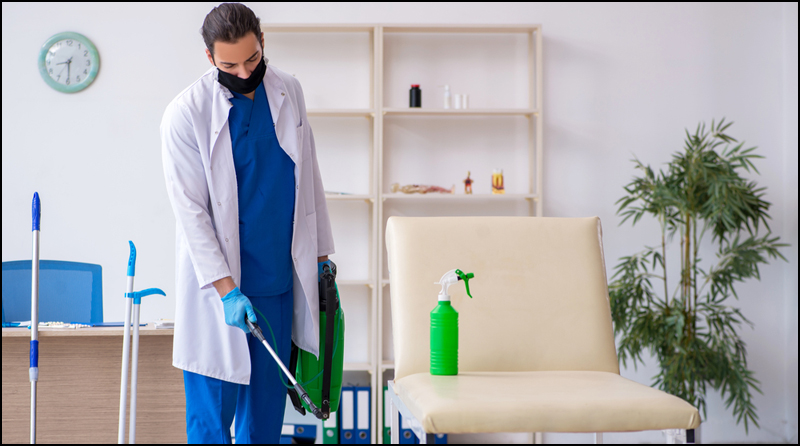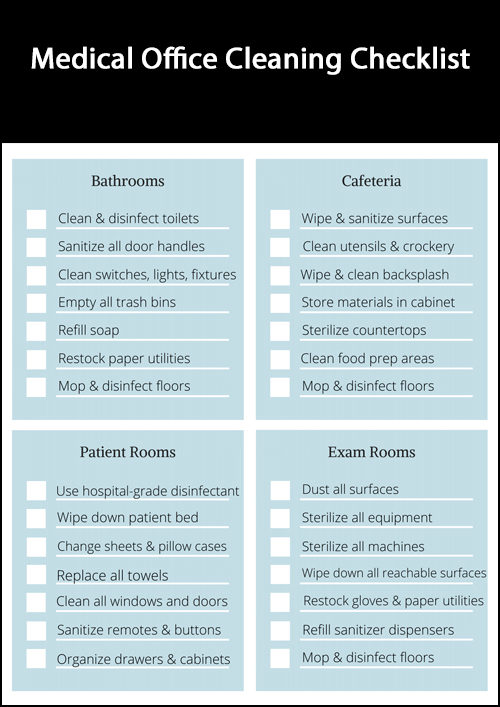How Often to Clean Medical Offices for Infection Control
Recommended Cleaning Frequency
The CDC recommends that Healthcare facilities should aim to disinfect high touch surfaces like doorknobs, chairs, and counters at least once per day. Floors should also be swept and mopped daily. Lower risk surfaces like walls and windows can be cleaned more periodically - about twice a week is sufficient in most cases.
In addition to daily disinfecting, medical offices should undergo a more thorough weekly or biweekly deep cleaning targeting all surfaces. The frequency can be adjusted based on factors like patient traffic and risk of infectious outbreaks. Putting together a checklist is extremely important.

| Medical Office Area/Item | Recommended Cleaning Frequency |
|---|---|
| Patient rooms | After each patient visit |
| Exam tables | After each patient |
| Counters | Twice daily |
| Doorknobs | Twice daily |
| Waiting room chairs | Daily |
| Clipboards/Pens | After each use |
| Bathrooms | Twice daily |
| Floors | Daily |
| Walls | Weekly |
| Reception desks | Daily |
| Lab equipment | After each use |
| Light switches | Daily |
| Cabinet handles | Daily |
Cleaning Based on Area Risk Level
Not all areas within a medical facility present identical risks when it comes to harboring and spreading dangerous infections. By understanding the contamination levels associated with different zones, medical offices can strategically tailor medical cleaning efforts.
Highest Risk Areas
Patient rooms, examination areas, and waiting rooms should be considered highest risk zones within a medical office due to the constant cycling of potentially infected patients. Any surfaces in these areas have a higher likelihood of retaining pathogens shed by contagious patients. As such, rigorous disinfection protocols should be implemented:
- Patient rooms and exam tables must be sanitized after each appointment
- Door handles, chairs, clipboards, counters, and other high-touch surfaces in these rooms should be disinfected at least 2-3 times per day
- Waiting room chairs, magazines, doors, and bathrooms should be thoroughly cleaned daily and disinfected every few hours

Moderate Risk Communal Areas
Hallways, staff breakrooms, and other communal areas see high foot traffic from both patients and employees, meaning periodic disinfection is essential. Extra attention should be paid to these high-touch surfaces:
- Doorknobs, pens, phones, computer keyboards disinfected 2-3 times a day
- Chairs, tables, vending machines, water coolers cleaned daily
- Floors swept and mopped daily
Lower Risk Zones
Offices, storage rooms, and other lower traffic areas may only need periodic deep cleanings such as:
- Vacuuming floors 2-3 times per week
- Sanitizing walls, windows, and other surfaces weekly
By targeting cleaning efforts based on risk profiles, medical offices can use resources effectively to maintain cleanliness.
Additional Considerations for Medical Office Cleaning Frequency
According to CloroxPro experts, these are some other things to consider when cleaning a medical facility.
- Adjust schedules based on facility traffic - Busier offices and clinics should increase cleaning frequency compared to slower paced ones.
- Factor in types of illnesses present - During cold/flu season or COVID outbreaks, increase disinfection of high-touch areas.
- Clean before sterilizing equipment - Remove dirt first so disinfectants work optimally.
- Follow manufacturers' instructions - Use proper cleaning methods for delicate medical equipment.
- Change mop heads/cloths frequently - Don't reuse dirty materials in multiple rooms to avoid cross-contamination.
- Allow proper air circulation - Clean when rooms are not occupied so disinfectants can dry thoroughly.
- Schedule overnight cleanings - Take advantage of low traffic periods for deep cleanings.
- Train staff on PPE use - Ensure proper gloves, gowns, masks worn when cleaning contaminated areas.
- Discard used sharps safely - Avoid needlestick injuries by proper hazardous waste disposal protocols.
- Communicate schedules - Post cleaning logs and notify staff of high-risk areas currently being disinfected.
Resources:
Get Bids for Medical Cleaning Services
Use our free request for quote tool and get price quotes from multiple medical cleaners in your area. There are no obligations to hire and we won't ask for your credit card information.

